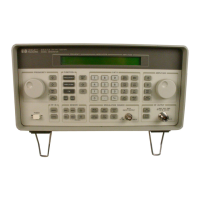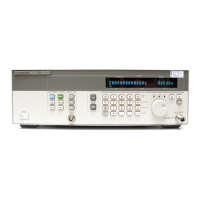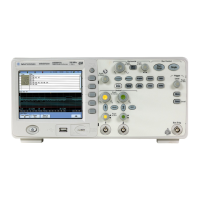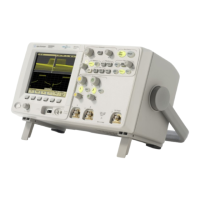44
S:\Hp8960\E1962B CDMA 2000\Pi Release\Reference Guide\Chapters\cdma2000_meas_cpower_desc.fm
Channel Power Measurement Description
Channel Power Measurement Description
How is a Channel Power measurement made?
Channel power measurements are made by analyzing a digitized version of the input signal’s downconverted
IF using the test set’s DSP (see “Block Diagram” ). Triggering occurs on the test set’s internal 20 ms frame
clock. The measurement is cross-calibrated with the detected average power to determine the absolute power
level.
Channel power measurements are limited to a 1.23 MHz bandwidth, and can be made on either power-gated
or non-power-gated input signals.
Channel Power Measurement Calibration
Channel power measurements are calibrated using the “CALibration:CPOWer?” command. Refer to
“CALibration Subsystem” for a description of channel power calibration.
Channel Power Measurement Speed
There are two channel power measurement speeds, fast and normal. See “SETup:CPOWer:MSPeed” for GPIB
command syntax.
Normal channel power measurements, like average power measurements, analyze a 10 millisecond sample of
the input signal, which is one-half of a CDMA frame. Since there is always at least one “on” power control
group in each half-frame the test set is able to “search” for and measure power during at least one “on” period.
Therefore, normal channel power measurements can be made when the mobile station is transmitting less
than full data rate, or is in one of the echo service options (mobile station is gating its output power according
to speech activity).
Fast channel power measurements do not perform the search for “on” power control groups. Fast channel
power measurements only sample the input signal for 1.25 milliseconds, and are applicable only when the
input signal power is not power-gated. An example of a condition which would result in the mobile station
transmitting a non power-gated signal would be when the mobile station is in a loopback service option (on a
call or not) and is transmitting full-rate data.
Input Signal Requirements
The channel power measurement meets or exceeds specifications when the following input signal
requirements are met:
• The frequency of the signal being measured must be within the range of 412 MHz to 483 MHz, 800 MHz to
960 MHz, or 1.7 GHz to 2.0 GHz, and be within 100 kHz of the expected frequency.
• The average power level of the signal at the RF IN/OUT connector must be between -61 dBm to +37 dBm.
The test set can autorange to a signal that is between +8 dBm to -20 dBm of the expected level (see
“RFANalyzer:AUTO:POWer[:SELected]?” ).

